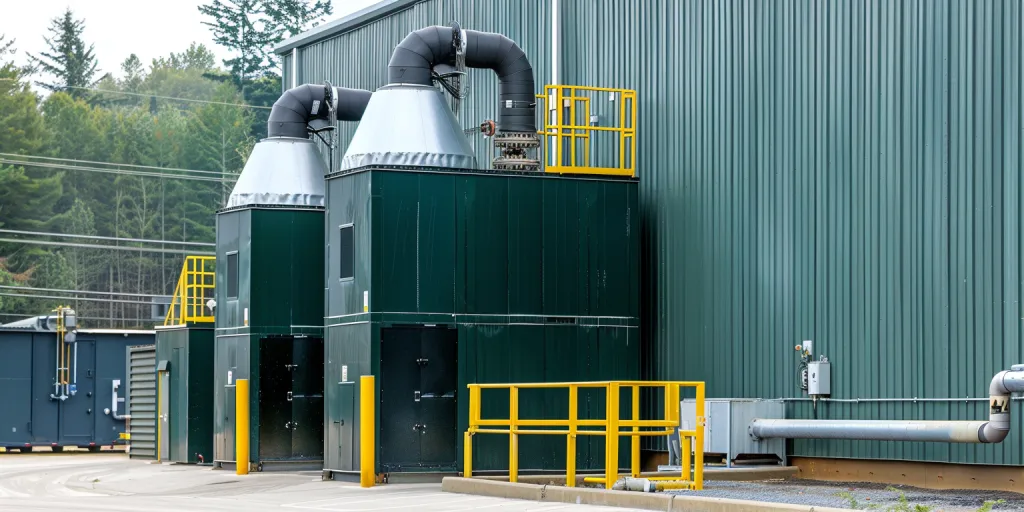Los sistemas de extracción de polvo son fundamentales para mantener la seguridad en el lugar de trabajo y el cumplimiento de las normas de la industria. A partir de 2025, las tecnologías avanzadas y las regulaciones estrictas impulsarán el mercado. Este artículo proporciona un análisis profundo de los sistemas de extracción de polvo y ofrece información valiosa para que los compradores comerciales tomen decisiones informadas y mejoren la eficiencia operativa.
Índice:
- Descripción general del mercado de sistemas de extracción de polvo
-Análisis detallado del mercado de extracción de polvo
- Factores clave a la hora de seleccionar sistemas de extracción de polvo
-Avances en la tecnología de extracción de polvo
-Beneficios ambientales y económicos
-Consideración de los requisitos específicos de la industria
-Reflexiones finales
Descripción general del mercado de sistemas de extracción de polvo
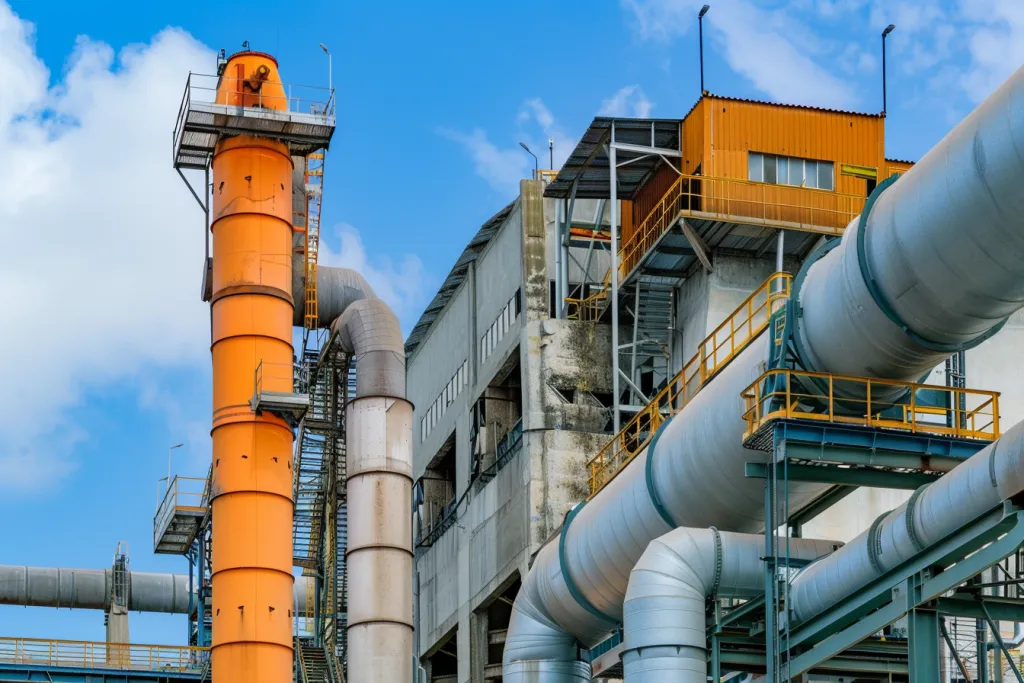
El mercado mundial de extracción de polvo está experimentando un crecimiento significativo, impulsado por estrictas regulaciones ambientales y una mayor conciencia sobre la seguridad en el lugar de trabajo. En 2024, el mercado estaba valorado en aproximadamente USD 8.73 mil millones y se proyecta que alcance los USD 11.92 mil millones para 2030, creciendo a una tasa de crecimiento anual compuesta (CAGR) del 5.0%. Este crecimiento está respaldado por la creciente adopción de tecnologías avanzadas de extracción de polvo en varias industrias, incluidas la fabricación, la farmacéutica y la agricultura.
Las regiones con estrictas regulaciones de calidad del aire, como América del Norte y Europa, muestran una gran demanda de sistemas de extracción de polvo. La región de Asia y el Pacífico también está experimentando un rápido crecimiento debido a la expansión industrial y la urbanización. En 2024, América del Norte tenía la mayor participación de mercado, seguida de Europa y la región de Asia y el Pacífico. El mercado está segmentado por tipo, tipo de medio y usuario final, siendo los colectores de polvo seco y los tipos de medios no tejidos los segmentos más destacados.
Los actores clave del mercado, entre los que se incluyen Donaldson Company, Inc., Nederman Holding AB y Parker Hannifin Corporation, están invirtiendo fuertemente en investigación y desarrollo. Su objetivo es innovar e introducir soluciones de extracción de polvo más eficientes y rentables. Se espera que la integración de IoT y tecnologías de automatización en los sistemas de extracción de polvo impulse aún más el crecimiento del mercado, ofreciendo capacidades mejoradas de monitoreo y control.
Análisis detallado del mercado de extracción de polvo
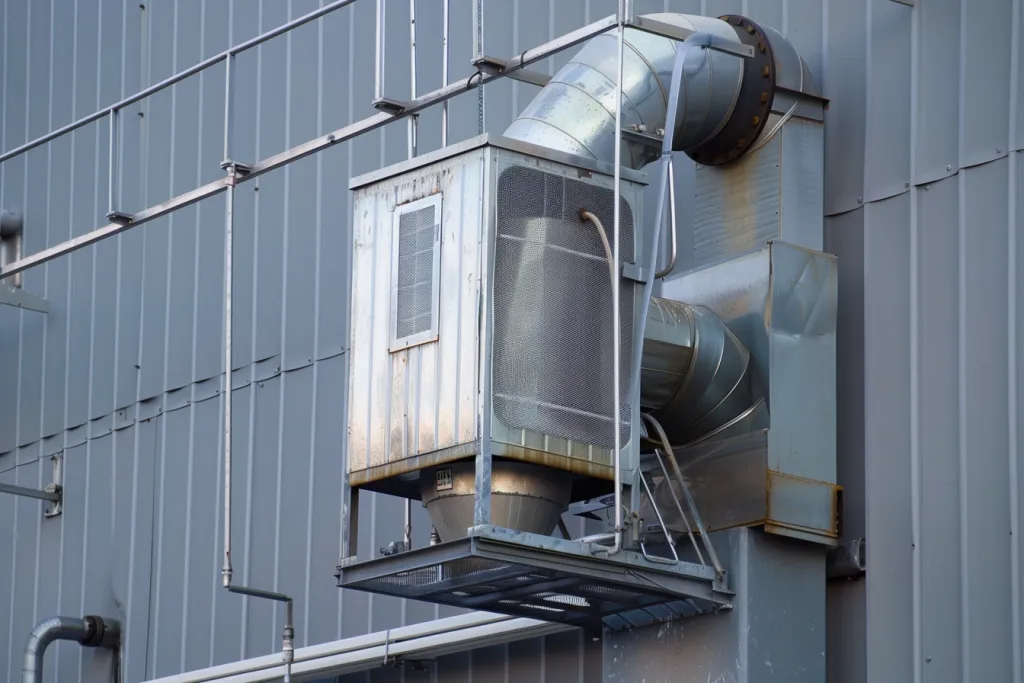
El mercado de extracción de polvo se caracteriza por varios parámetros de rendimiento clave: eficiencia de filtración, consumo de energía y requisitos de mantenimiento. La eficiencia de filtración es crucial, y los filtros de aire de partículas de alta eficiencia (HEPA) y los filtros de aire de penetración ultrabaja (ULPA) son los estándares de oro. Estos filtros pueden capturar partículas tan pequeñas como 0.3 micrones con una eficiencia del 99.97 %, lo que los hace esenciales en industrias con estándares estrictos de calidad del aire.
La dinámica de la participación en el mercado revela que los actores establecidos como Donaldson Company, Inc. y Nederman Holding AB dominan el mercado. Sin embargo, los actores emergentes están ganando terreno al ofrecer soluciones innovadoras y dirigirse a nichos de mercado como las pequeñas y medianas empresas (PYME) que requieren sistemas de extracción de polvo rentables y escalables.
Las influencias económicas, como el aumento de la actividad industrial y los incentivos gubernamentales para la adopción de tecnologías limpias, están impulsando el crecimiento del mercado. El comportamiento de los consumidores está cambiando hacia productos ambientalmente sostenibles, lo que impulsa a los fabricantes a desarrollar sistemas de extracción de polvo ecológicos y energéticamente eficientes. Las preferencias en cuanto a los canales de distribución están evolucionando, con un énfasis creciente en las ventas en línea y los modelos directos al consumidor para mejorar la accesibilidad y la participación del cliente.
Las innovaciones recientes incluyen sistemas de extracción de polvo inteligentes equipados con sensores IoT para monitoreo en tiempo real y mantenimiento predictivo. Estos sistemas pueden detectar obstrucciones en los filtros, monitorear la calidad del aire y optimizar el consumo de energía, lo que reduce los costos operativos y el tiempo de inactividad. Las etapas del ciclo de vida del producto varían: los mercados maduros se centran en los ciclos de reemplazo y actualización, mientras que los mercados emergentes están en la fase de crecimiento, impulsados por nuevas instalaciones.
La digitalización está desempeñando un papel crucial en la transformación del mercado de extracción de polvo, con soluciones de software avanzadas que permiten la supervisión y el control remotos de los sistemas de extracción de polvo. Las tendencias sociales, como la creciente concienciación sobre la salud y la seguridad en el trabajo, están impulsando la demanda de sistemas de extracción de polvo de alto rendimiento en los lugares de trabajo. Los problemas de los clientes incluyen los altos costes iniciales de instalación y la complejidad de integrar sistemas avanzados en las infraestructuras existentes.
Las estrategias de posicionamiento de marca se centran en destacar la eficiencia, la fiabilidad y la sostenibilidad de los sistemas de extracción de polvo. Las estrategias de diferenciación incluyen ofrecer soluciones personalizadas que satisfagan los requisitos específicos de la industria y brindar un soporte posventa integral. Los nichos de mercado, como las salas blancas y los laboratorios, exigen sistemas de extracción de polvo especializados con estrictos requisitos de filtración, lo que presenta oportunidades para que los actores del mercado amplíen su oferta de productos.
Factores clave a la hora de seleccionar sistemas de extracción de polvo
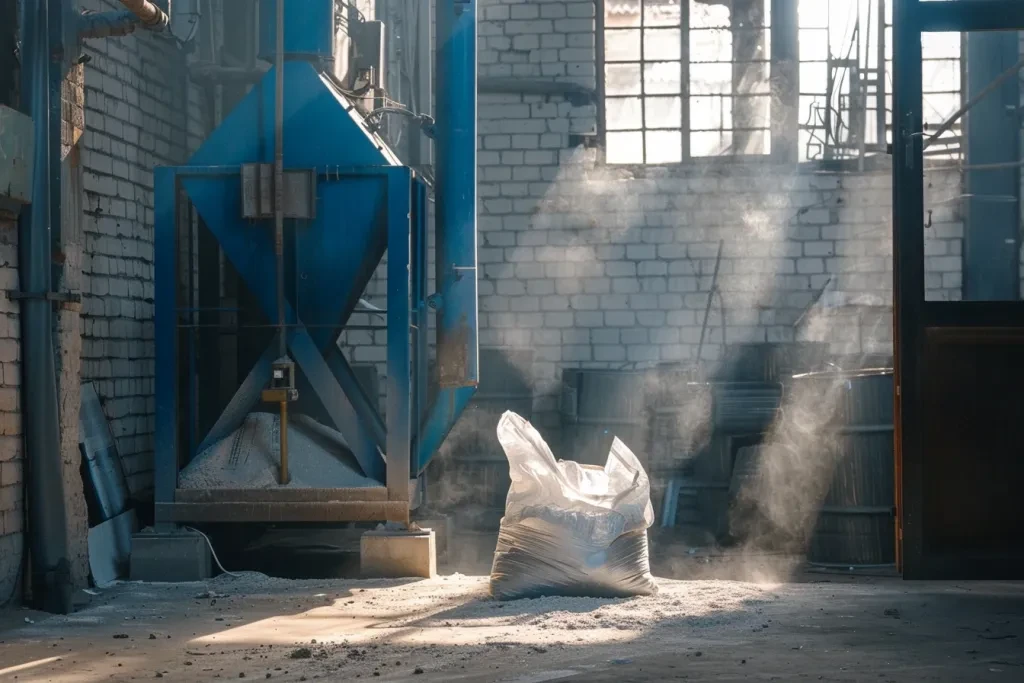
Al seleccionar un sistema de extracción de polvo, tenga en cuenta varios factores clave para garantizar un rendimiento óptimo, seguridad y cumplimiento de las normas de la industria. Estos factores incluyen especificaciones de rendimiento, tipos de colectores de polvo, compatibilidad con otros sistemas, normas de seguridad y requisitos de mantenimiento. Comprender estos elementos ayuda a los compradores industriales a tomar decisiones informadas que se ajusten a sus necesidades operativas y requisitos regulatorios.
Especificaciones de rendimiento
Las especificaciones de rendimiento son fundamentales a la hora de seleccionar un sistema de extracción de polvo, ya que permiten comprender claramente las capacidades y limitaciones del sistema.
Rango del flujo de aire
El caudal de aire, medido en pies cúbicos por minuto (cfm), define el volumen de aire que puede manejar el sistema de extracción de polvo. Un caudal de aire más alto es esencial para instalaciones con equipos grandes que generan polvo, ya que garantiza una eliminación eficiente del polvo y mantiene la calidad del aire. Los fabricantes suelen proporcionar tablas de caudal de aire para diferentes materiales a fin de indicar el movimiento de aire necesario para una recolección de polvo eficaz.
Tamaño mínimo de partículas filtradas
El tamaño mínimo de partícula filtrada, medido en micrómetros (µm), indica las partículas de polvo más pequeñas que el sistema puede capturar. Esta especificación es crucial para entornos con partículas finas, como la fabricación de productos farmacéuticos o el mecanizado de precisión. Los sistemas capaces de capturar partículas tan pequeñas como 0.3 µm son muy eficaces para mantener los estándares de aire limpio.
Eficiencia de cobranza
La eficiencia de recolección define el porcentaje de material particulado que el sistema puede capturar de manera efectiva. Los sistemas de alta eficiencia pueden lograr eficiencias de recolección superiores al 99.9 %, lo que los hace adecuados para industrias que requieren controles estrictos de la calidad del aire, como la fabricación de productos electrónicos y el procesamiento de alimentos.
Tipos de colectores de polvo
Existen distintos tipos de colectores de polvo adecuados para diversas aplicaciones, cada uno con ventajas y limitaciones únicas.
Separadores ciclónicos
Los separadores ciclónicos utilizan la fuerza centrífuga para separar las partículas de polvo de la corriente de aire. Son ideales para aplicaciones con partículas de mayor tamaño y ofrecen eficiencias moderadas de más del 90 % para partículas de más de 5 µm. Los separadores ciclónicos son rentables y requieren un mantenimiento mínimo, lo que los hace adecuados como prelimpiadores antes de sistemas más avanzados.
Precipitadores electrostáticos (ESP)
Los ESP utilizan fuerzas electrostáticas para capturar partículas de polvo. Son muy eficientes, con una eficiencia de recolección superior al 99.9 % para partículas finas. Los ESP son adecuados para entornos con grandes volúmenes de polvo y humo, como centrales eléctricas y acerías. Sin embargo, requieren una inversión de capital significativa y son sensibles a los cambios en las condiciones de funcionamiento.
Filtración de medios
Los sistemas de filtración de medios utilizan filtros para atrapar partículas de polvo. Estos sistemas son versátiles y se pueden personalizar para diversas aplicaciones. Los filtros de mangas, un tipo común de filtro de medios, son eficaces para partículas pequeñas y pueden manejar grandes cargas de polvo. Los colectores de polvo de cartucho, otro tipo de filtro de medios, son compactos y adecuados para aplicaciones con polvo de formas y tamaños especiales.
Compatibilidad con otros sistemas
Los sistemas de extracción de polvo deben ser compatibles con los equipos existentes y las actualizaciones futuras.
Integración con equipos de producción
El sistema de extracción de polvo seleccionado debe integrarse perfectamente con el equipo de producción existente. Esto garantiza una captura de polvo eficiente y minimiza las interrupciones en el proceso de producción. La compatibilidad con diversas máquinas que generan polvo, como amoladoras, sierras y mezcladoras, es esencial.
Diseño modular:
Los diseños modulares permiten realizar actualizaciones y ampliaciones con facilidad. Esta flexibilidad es fundamental para las operaciones en crecimiento, ya que permite agregar nuevos componentes sin tiempos de inactividad significativos. Los sistemas modulares también simplifican el mantenimiento y las reparaciones, ya que los módulos individuales se pueden reparar o reemplazar de forma independiente.
Preparado para el futuro
La selección de un sistema que admita los avances tecnológicos futuros es importante para las inversiones a largo plazo. Los sistemas con capacidades de monitoreo remoto, controles automatizados y compatibilidad con tecnologías de filtración avanzadas garantizan que las instalaciones cumplan con los estándares cambiantes de la industria.
Normas de seguridad y certificaciones
El cumplimiento de las normas y certificaciones de seguridad no es negociable en los entornos industriales.
Certificación ATEX
La certificación ATEX es esencial para los sistemas que funcionan en entornos explosivos. Esta certificación garantiza que el sistema de extracción de polvo está diseñado y probado para evitar explosiones, protegiendo tanto al personal como al equipo.
Normas NFPA
La Asociación Nacional de Protección contra Incendios (NFPA) proporciona pautas para prevenir y mitigar las explosiones de polvo. Los sistemas de extracción de polvo deben cumplir con las normas de la NFPA, incluido el diseño adecuado de los conductos, la ventilación en caso de explosión y los protocolos de mantenimiento periódico.
Regulaciones de OSHA
La Administración de Seguridad y Salud Ocupacional (OSHA) establece normas de calidad del aire en los lugares de trabajo. Los sistemas de extracción de polvo deben cumplir con los requisitos de la OSHA en cuanto a límites de exposición permisibles (PEL) para garantizar un entorno de trabajo seguro.
Requisitos de mantenimiento
El mantenimiento regular es crucial para el rendimiento óptimo y la longevidad de los sistemas de extracción de polvo.
Reemplazo de filtro
Los filtros deben reemplazarse periódicamente para mantener su eficiencia. Los filtros de aire de partículas de alta eficiencia (HEPA) y los filtros de aire de penetración ultrabaja (ULPA) requieren inspecciones y reemplazos regulares para garantizar que sigan capturando partículas finas de manera eficaz.
Mecanismos de limpieza
Los sistemas con mecanismos de limpieza automatizados, como la limpieza por chorro de pulso, reducen los esfuerzos de mantenimiento manual. Estos mecanismos eliminan la acumulación de polvo en los filtros, manteniendo un flujo de aire constante y una eficiencia de recolección.
Inspecciones programadas
Las inspecciones de rutina son necesarias para identificar y abordar posibles problemas antes de que se agraven. El mantenimiento programado debe incluir la verificación del desgaste, el correcto funcionamiento de todos los componentes y la verificación del cumplimiento de las normas de seguridad.
Avances en la tecnología de extracción de polvo
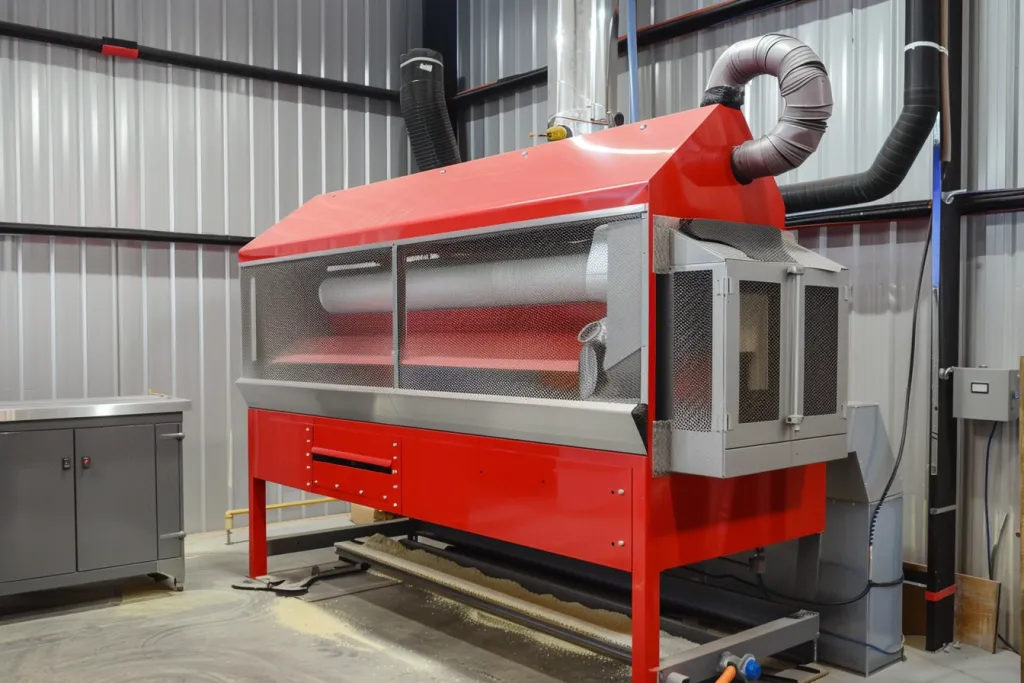
La industria de extracción de polvo continúa evolucionando, con nuevas tecnologías que mejoran la eficiencia y la seguridad.
IoT y monitoreo remoto
La integración de la Internet de las cosas (IoT) en los sistemas de extracción de polvo permite la monitorización remota y el análisis de datos en tiempo real. Los sensores integrados en el sistema pueden realizar un seguimiento de métricas de rendimiento como el caudal de aire, la eficiencia del filtro y las caídas de presión. Se puede acceder a estos datos de forma remota, lo que permite un mantenimiento proactivo y una respuesta inmediata ante cualquier anomalía.
Controles automatizados
Los controles automatizados optimizan el funcionamiento de los sistemas de extracción de polvo. Estos controles pueden ajustar los caudales de aire, iniciar ciclos de limpieza y gestionar el consumo de energía en función de datos en tiempo real. La automatización reduce la necesidad de intervención manual, lo que mejora la eficiencia y la fiabilidad del sistema.
Materiales de filtración avanzados
Los nuevos materiales de filtración, como las nanofibras y las telas recubiertas de membranas, ofrecen capacidades superiores de captura de polvo. Estos materiales avanzados pueden atrapar partículas más pequeñas y, al mismo tiempo, mantener bajas las caídas de presión, lo que mejora el rendimiento general del sistema. También tienen una vida útil más prolongada, lo que reduce la frecuencia de reemplazo de los filtros.
Beneficios ambientales y económicos
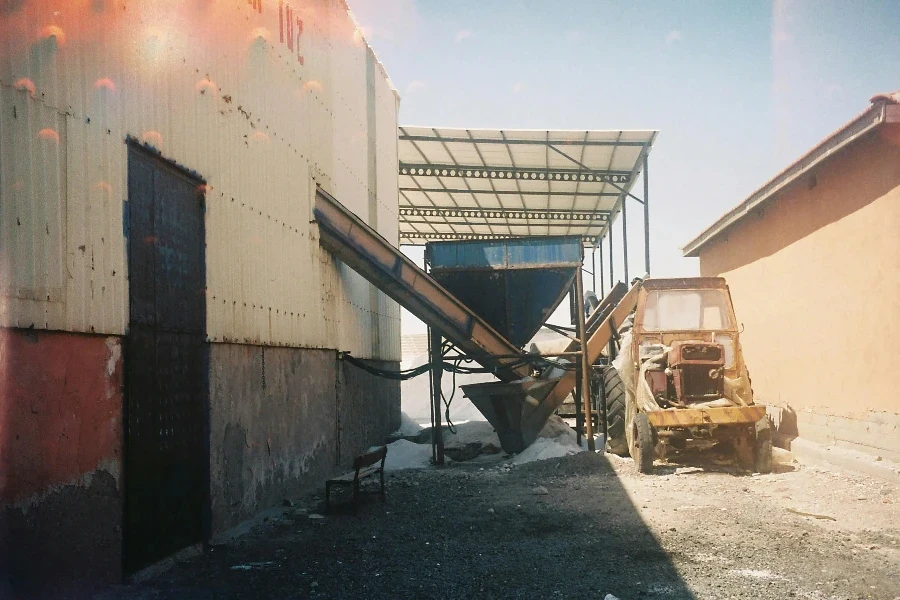
Invertir en sistemas avanzados de extracción de polvo proporciona beneficios tanto ambientales como económicos.
Calidad del aire mejorada
Los sistemas de extracción de polvo de alta eficiencia mejoran significativamente la calidad del aire interior, creando un entorno de trabajo más seguro y saludable. Esto reduce el riesgo de problemas respiratorios y mejora el bienestar y la productividad de los empleados.
Eficiencia energética
Los sistemas de extracción de polvo modernos están diseñados para ser energéticamente eficientes, lo que reduce los costos operativos. Los variadores de frecuencia (VFD) pueden ajustar las velocidades del motor según la demanda, optimizando el uso de energía. Los sistemas energéticamente eficientes también contribuyen a los objetivos de sostenibilidad al reducir la huella de carbono de las instalaciones.
Ahorro en costos
Si bien los sistemas avanzados de extracción de polvo pueden requerir inversiones iniciales más elevadas, ofrecen ahorros de costos a largo plazo. Los menores requisitos de mantenimiento, la mayor vida útil de los filtros y el menor consumo de energía contribuyen a un menor costo total de propiedad. Además, el cumplimiento de las normas de seguridad minimiza el riesgo de multas costosas y problemas legales.
Consideración de los requisitos específicos de la industria
Cada industria tiene requisitos únicos que deben tenerse en cuenta al seleccionar sistemas de extracción de polvo.
Fabricación farmacéutica
En la fabricación de productos farmacéuticos, es fundamental mantener un entorno estéril. Los sistemas de extracción de polvo deben tener filtros de alta eficiencia para capturar partículas finas y evitar la contaminación. Los sistemas también deben ser fáciles de limpiar y mantener para cumplir con los estrictos estándares de higiene.
Metalmecánica
Las industrias metalúrgicas generan una cantidad importante de polvo y humos. Los sistemas de extracción de polvo en estos entornos deben soportar grandes cantidades de polvo y capturar partículas metálicas finas. Los sistemas también deben estar diseñados para controlar las chispas y evitar los riesgos de incendio.
Tratamiento de la madera
Las instalaciones de carpintería producen grandes volúmenes de aserrín y partículas de madera. Los sistemas de extracción de polvo deben tener caudales de aire elevados para manejar la carga de polvo de manera eficaz. Los sistemas también deben estar equipados con mecanismos de detección y extinción de chispas para evitar incendios.
Reflexiones Finales:
Seleccionar el sistema de extracción de polvo adecuado es un proceso complejo que requiere una consideración cuidadosa de las especificaciones de rendimiento, los tipos de colectores, la compatibilidad con otros sistemas, las normas de seguridad y los requisitos de mantenimiento. Al comprender estos factores y mantenerse informados sobre los avances en la tecnología de extracción de polvo, los compradores industriales pueden tomar decisiones informadas que garanticen un rendimiento óptimo, seguridad y cumplimiento de las normas de la industria.
